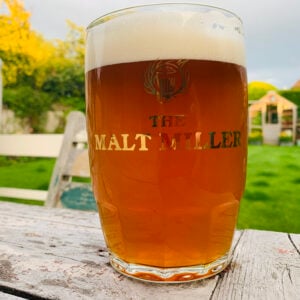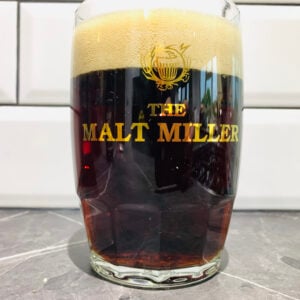Brew With Us ESSENTIALS – which malt for my recipe?

The (malt) bill, please
It’s been a journey, but we’ve reached the final part of our guide to malts.
Now our knowledge can go to work…
Knowing what the different types of malts (and other grains, and sugars too) are and what they’re used for means we can now figure out why certain ingredients have been used in a recipe. This is also the starting point for making our own recipes!
Let’s look at three of our most popular recipe kits and apply what we’ve learned.
Landlord

We’ll start with our Timothy Taylor Landlord clone. The malt bill for this beer features Golden Promise pale ale malt, pale wheat malt, and black malt.
We know that Golden Promise is a base malt. This provides almost all the sugars for the wort and has plenty of diastatic enzymes to unlock those sugars and make them fermentable for the yeast. Golden Promise is known for its full flavour, which plays very well with hops, so it’s an ideal choice for a bitter like Landlord.
Wheat malt is a specialty malt. Wheat has more proteins than barley, which helps give the beer a fluffy and long-lasting head – an essential part of a good cask-style ale.
Lastly, we’ve got a very small amount of black malt, a heavily roasted malt. In this small quantity, the black malt acts mainly here to adjust the overall colour of the beer, but it will contribute a hint of roasty complexity.
Skilfully combining these three different types of malt gives Landlord its characteristic balance and near-endless drinkability!
Leffe
Another perennially popular choice, this Belgian blonde ale has three malts and one sugar.
Pilsen malt is the base malt here. We know this is very pale in colour and has a dry, crackery kind of flavour, which gives the beer its crispness and pale golden colour. Aromatic malt – a specialty malt – is produced similarly to Munich malt, which we know has a much more intense maltiness and deeper colour. Using just a small amount of this adds depth and richness – too much would unbalance the beer and make it hard work to drink. As with the Landlord, we have a small amount of wheat malt to improve the head.

We also have candi sugar. As we now know, this is a simpler sugar than the malt will provide, so the yeast will consume it first before getting onto the complex malt sugars. Yeast is a very important part of the flavour profile of a Belgian beer like this, and yeast expresses different flavours depending both on which sugars it’s fermenting and when in its lifecycle it gets to them. Using candi sugar alongside the malts – along with the choice of mash temperature used with those malts – makes a wort that produces the best expression of the yeast for that signature Belgian flavour.
You Sexy Thing!
One of our most enduring stout recipes, this is a sweet “pastry”-style beer with an intricately balanced malt bill. Seven different grains and two different sugars combine to make a rich and satisfying beer!

Golden Promise is the base malt here, though it is only a bit more than 50% of the total bill, comparatively less than the Landlord or Leffe clones. The next highest proportion of malt comes from Biscuit malt. A specialty malt like Aromatic, this is similar to Munich malt, though Biscuit is darker than Aromatic and has a more intense nuttiness and maltiness. This nutty quality will shine through in the final beer and helps give it body.
Oats are present both as naked oat malt, which adds creaminess and body to the beer, and also as plain husks. “Naked” just means that the husks aren’t included with the malt, hence we’re adding them back separately. We know that oat husks help avoid stuck mashes and that’s particularly important with a massive grain bill like this one.
Dark crystal malt has a deep, dried fruit and burnt caramel flavour, which gives a different dimension to the sweetness of the beer. Then we have two different “Carafa Special” malts. These are dehusked roasted malts. Removing the husk before roasting means these are much less bitter and astringent than other roasted malts. These add espresso and dark cocoa-like flavours as well as the black colour you want in a stout.
Last we come to the sugars: molasses and lactose. The molasses provide a rich dark fruit flavour, almost like Christmas cake. The lactose is unfermentable, adding sweetness that won’t be consumed by the yeast, while its signature milky flavour smoothes and balances the myriad of malt flavours.
This is definitely a much more complex malt bill than the others we’ve looked at, but each ingredient plays a distinct role. It all adds up to one very delicious beer!
Congratulations on completing this section of Brew With Us ESSENTIALS!
You’re well on your way now!
Our focus falls next on many brewers’ favourite ingredient: hops. A green and leafy kingdom awaits…


